Sew a Crossbody Bag with our Free Belt Bag Pattern!

Step up your on-the-go game with our FREE Core Belt Bag pattern! Whether you rock it as a crossbody, fanny pack, waist bag, moon bag, or sac banane, this accessory blends style with practicality. Plus, it's fun to sew! Simply download our Free Core Belt pattern below and we'll guide you every step of the way through the sewing process, ensuring a seamless experience from start to finish.
Do you prefer learning by video? Check out our handy sew-along video at the end of this post.

Designed to work with a variety of fabrics, our Core Belt Bag comes in two sizes: the small version (13"W x 6"H) fits essentials like your phone, wallet, and keys, while the large version (15"W x 8"H) is ideal for those must-have extras (think small notebook, charger, and snacks). Fully lined and boasting a front zipper, an optional inside pocket, a swivel hook, and an adjustable strap with slider buckle, which you can get in our all-in-one Core Belt Bag Hardware Kit, it's a versatile + cute little bag.
With the small size requiring less than a 1/4 yard of fabric, it's the perfect project for stash-busting and adding a matching accessory to your wardrobe.
Ready to sew your fanny pack(s)? Follow our tutorial to create a functional little bag that will suit your style to a tee.
Download the Free Pattern:
(If you don't see the box above, please authorize this page on your popup blocker)
Fabric Choices for Your Belt Bag:
The Core Belt Bag can be made using any stable mid to heavy bottomweight fabrics like denim, twill, canvas, and corduroy. You can also use waterproof fabrics like waxed cotton or waterproof softshell. You can also quilt your own fabric and add batting. For a strong lining, choose a stable and sturdy woven like quilting cotton, cotton broadcloth, and light to midweight cotton twill.
For our samples, we've used:
- 12.75oz Stretch Eco Denim + Illustrated Daisy Print Cotton Poplin
- Midweight Organic Cotton Canvas + Yarn-Dyed Handwoven Stripe Khadi Cotton
- Organic Non Stretch Cotton Corduroy + Ditzy Floral Meadow Print Cotton Poplin
- Waterproof Recycled Dintex Meshback Softshell + Lightweight Silky Cotton Poplin
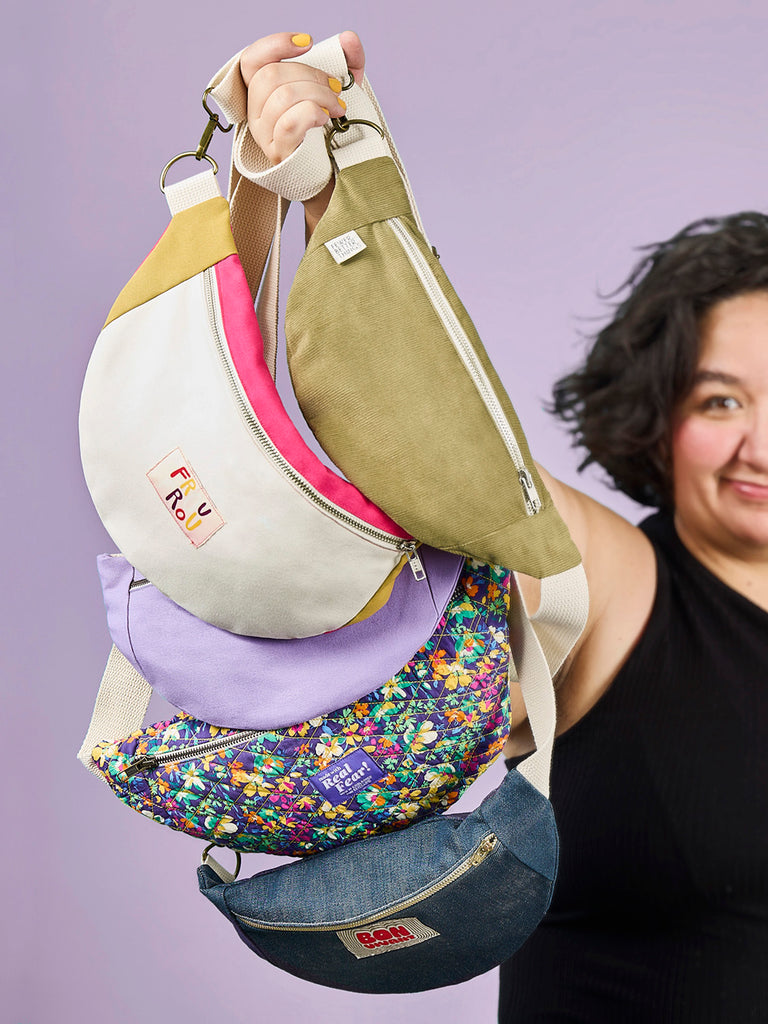
You Will Need:
- PDF pattern printed in your chosen size
- Fabric and lining (see yardage below)
- The Core Belt Bag Hardware Kit which includes the following:
- Two yards of 1.5" webbing in cream or black
- One 1.5" (38 mm) wide D-ring
- One 1.5" (38 mm) wide slider buckle
- One 1.5" (38 mm) wide swivel hook
** If you don't have the hardware above, you can also sub in the buckles and swivel hook by sewing the webbing directly into the side seams and closing with a simple plastic buckle.
- One 16" or longer zipper (zipper is longer than final measurement and we'll adjust the length when sewing it)
- Machine needles
- Thread in a matching colour
- Pins
- Marking tool
- Snips
- Optional: Sewing label
- Optional: Topstitching thread
- Optional: Walking foot (if quilting)
- Optional: Batting (if quilting)
Yardage Requirements:
Small Core Belt Bag
| Main Fabric | Lining | |
| 58"/1.5 m fabric | 0.25 yd (0.23 m) | 0.25 yd (0.23 m) |
Large Core Belt Bag
| Main Fabric | Lining | |
| 58"/1.5 m fabric | 0.33 yd (0.3 m) | 0.33 yd (0.3 m) |
Finished Measurements:
| Small Core Belt Bag | Large Core Belt Bag |
| 13"w x 6"h x 2.5"d | 15"w x 8"h x 3"d |

How to Sew the Core Belt Bag
If you prefer following along by video, we have filmed the entire process! Otherwise follow along with our step-by-step instructions below.
Step 1: Gather Your Tools and Prepare Materials
Begin by gathering all necessary materials and pattern pieces. Note that seam allowances are ½-inch unless specified otherwise.
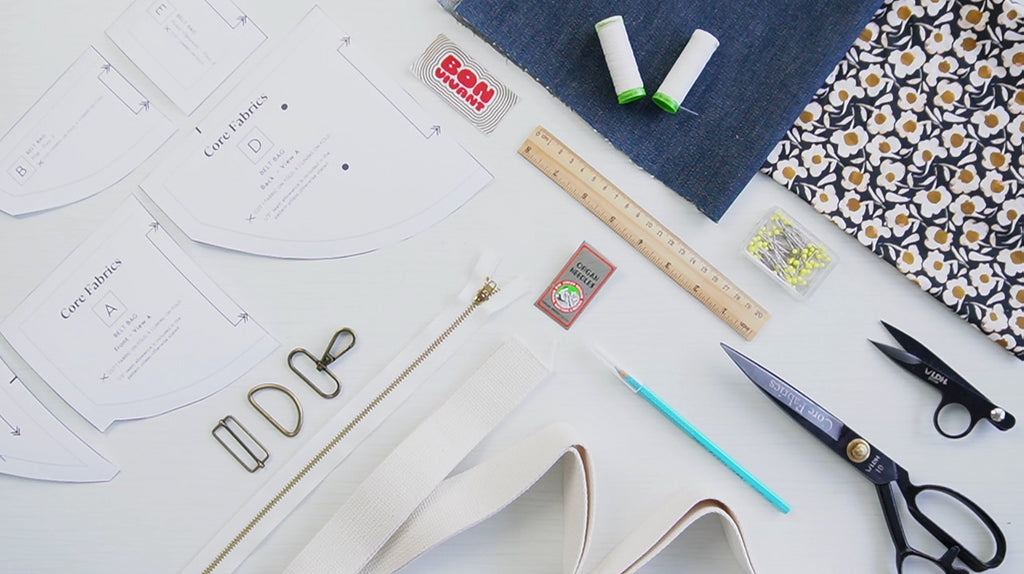
Step 2: Cut Fabric and Transfer Marks
Carefully cut both the main fabric and lining using the provided pattern pieces. Transfer all construction marks and notches onto the fabric and lining to ensure accurate assembly. Marking the centres of the pieces will also help with alignment during assembly.
Step 3: Sew Zipper to Front Pieces
Align the closed zipper with the top edge of the front of main fabric, right sides together. The zipper is longer, allowing for excess length on the sides to make it easier during assembly. Secure with pins and stitch at a ½-inch seam allowance.

(OPTIONAL) Sew Label: If you've chosen to add a label or patch to the front of your belt bag, it's time to position and sew it.

Similarly, position the zipper to the front lining by placing the lining right side down on the wrong side of the zipper. The zipper should be sandwiched between the main fabric and the lining. Pin and stitch along the zipper.
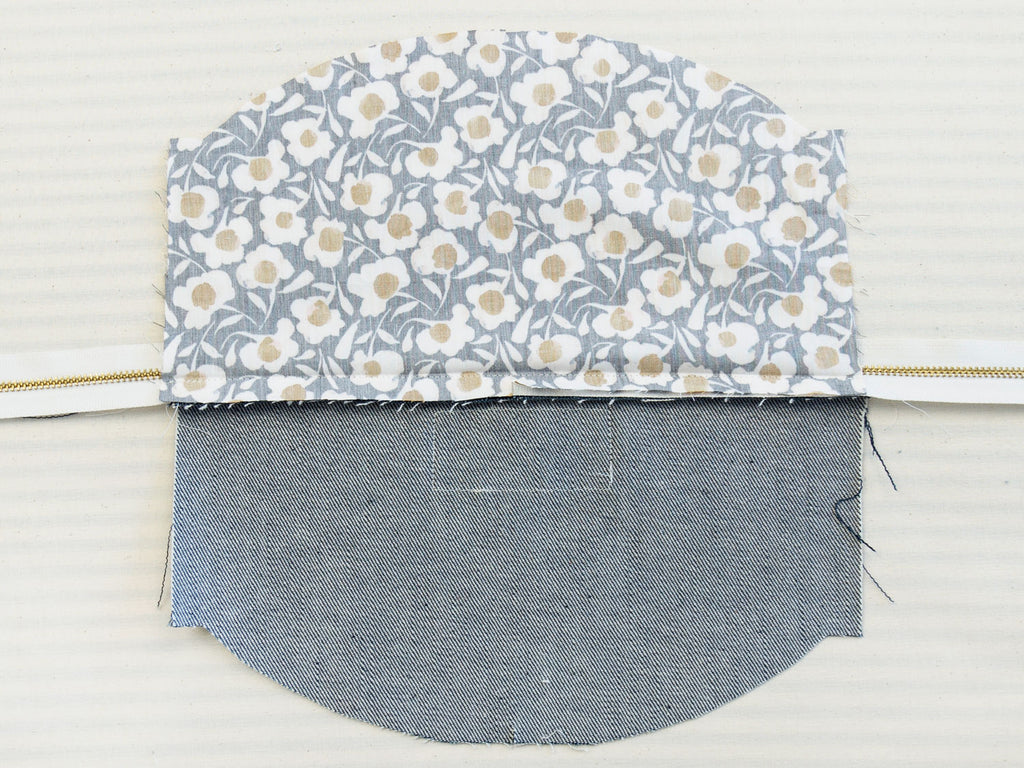
Flip the layers together and secure with a top stitch along the edge.

Step 4: Sew Zipper to Flap Pieces
Right sides together, position the zipper onto the flap main fabric, aligning the zipper with the lower rounded part of the flap. To ease sewing around the rounded edge, pin the middle first, followed by each end, and distribute excess fabric evenly with additional pins.
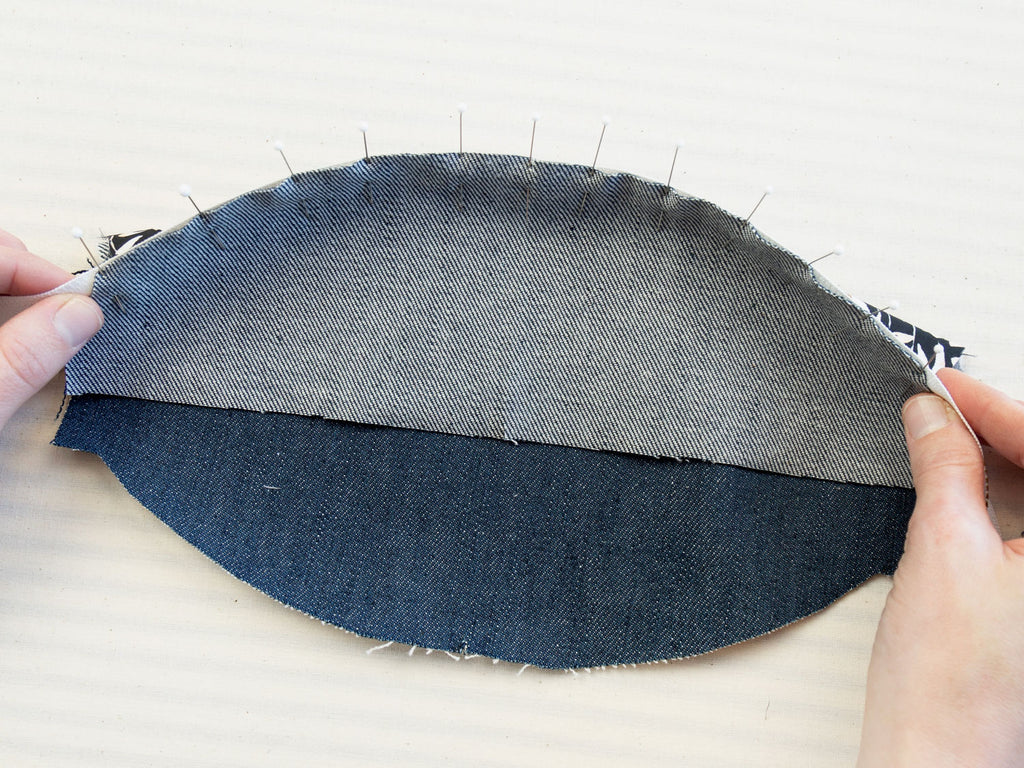
Stitch carefully along the zipper.
Repeat the process for the flap lining, ensuring the zipper is sandwiched between the lining and main fabric. Secure with pins and stitch along the entire length. Flip the layers together and add a top stitch along the zipper edge.
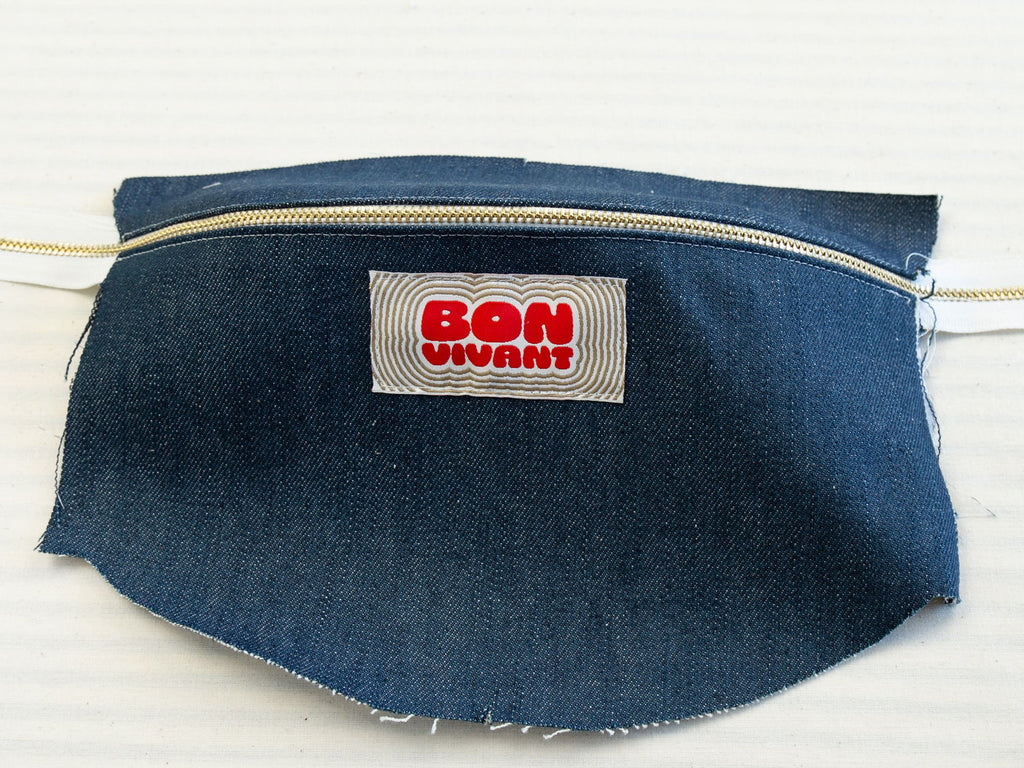
Slide the zipper towards the centre to avoid interference during subsequent steps. Tack stitch the side of your zipper by hand or by machine (be careful not to hit the zipper teeth with your machine needle). This will help hold the zipper closed while sewing the sides.

Step 5: Sew Sides to Front Panel
Align the side of the main fabric with the side of the front panel main fabric, pinning carefully to avoid the zipper. Repeat for the lining. The result should look like an X.
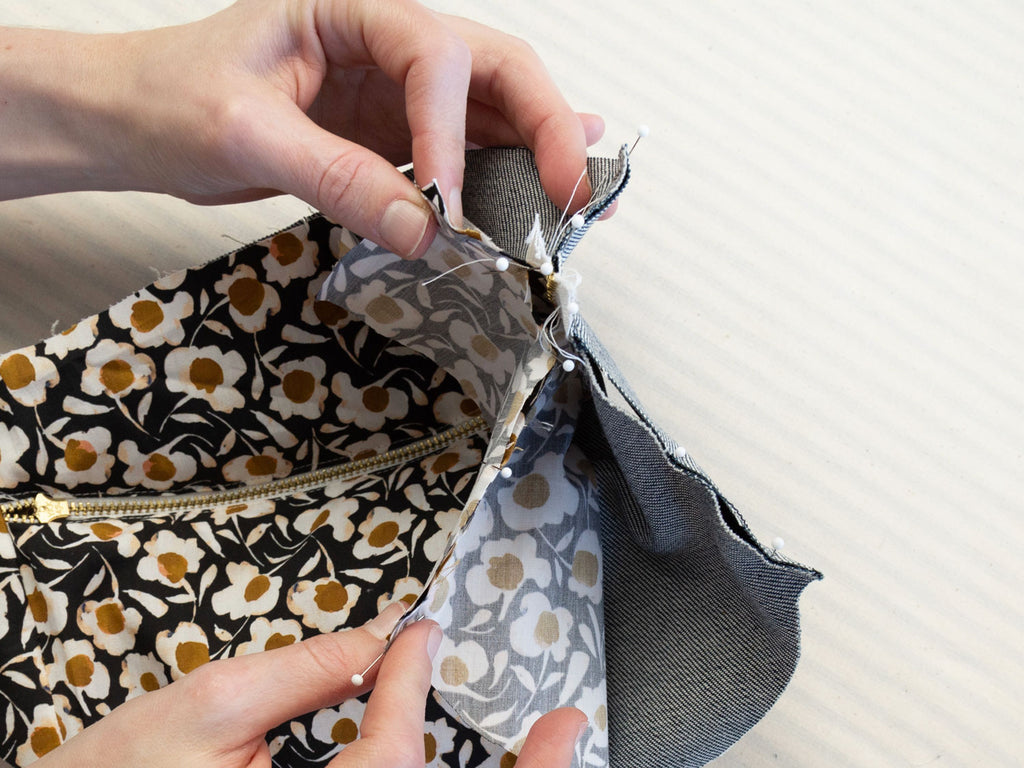
Stitch the 4 sides of the X carefully to avoid the zipper.

Stitch all layers together, only over the zipper. Trim any excess zipper within the seam allowance if necessary. Repeat for the other side.
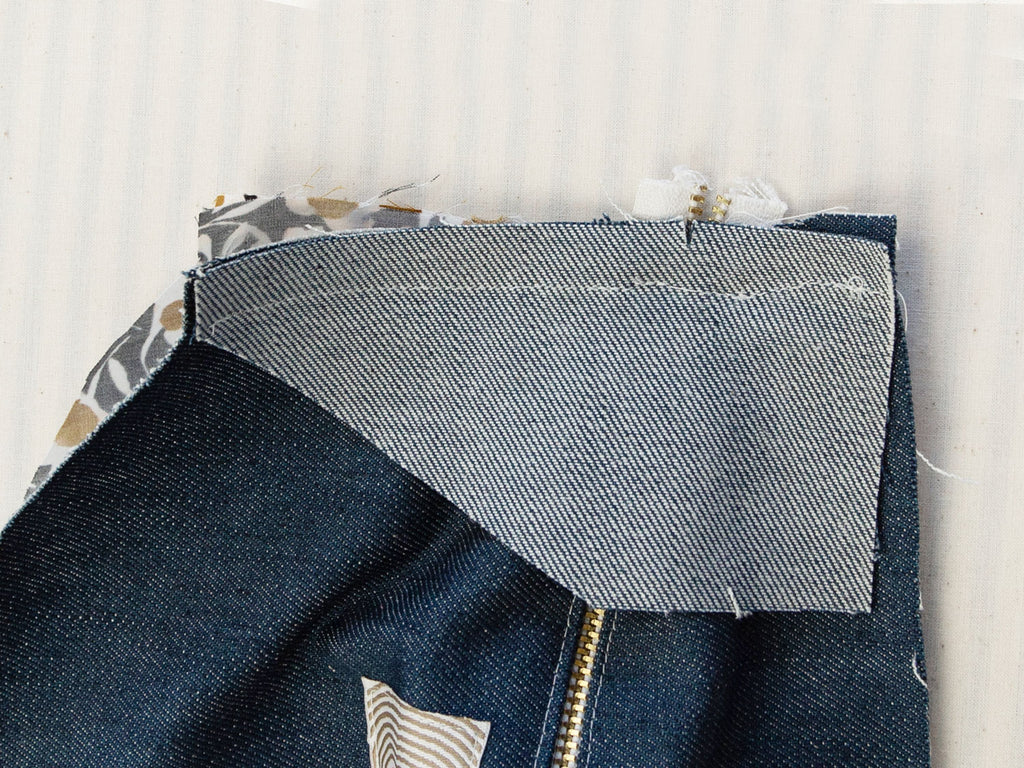
(OPTIONAL) Sew Inside Pocket to Lining of Back Piece
Fold by 1/8-inch, then again by 3/8-inch, and topstitch the top edge of the inside pocket. Finish the raw edges with a serger or zigzag stitch. Fold the sides and bottom by ½ inch and press. Attach the pocket to the lining back, aligning with marks. Secure with pins and topstitch along the sides and bottom edges.
Step 6: Sew Webbing Straps to Front Panel
Cut a 2-inch strip of webbing. Align the webbing with the main fabric front’s right side and stitch it down within the seam allowance.

Pass the 2-inch webbing through the D-ring, fold in half and topstitch the webbing down within the seam allowance. Sew the rest of the webbing to the main fabric front’s left side within the seam allowance. Roll up the webbing and secure it with an elastic to keep it out of the way. Make sure the zipper is slightly open.

Step 7: Sew Front to Back
Right sides together, align the back of the main fabric and the front of the main fabric. Pin together along the edges.

Stitch the sides and curved edge, leaving the top edge open. Similarly, pin and sew the lining pieces together, leaving the top edge open and a 4-inch opening on the curved edge for turning.

Pin the top edges of the main fabric and lining together.

Sew all the layers together at the top edge. Trim corners and excess fabric before turning the belt bag right side out.
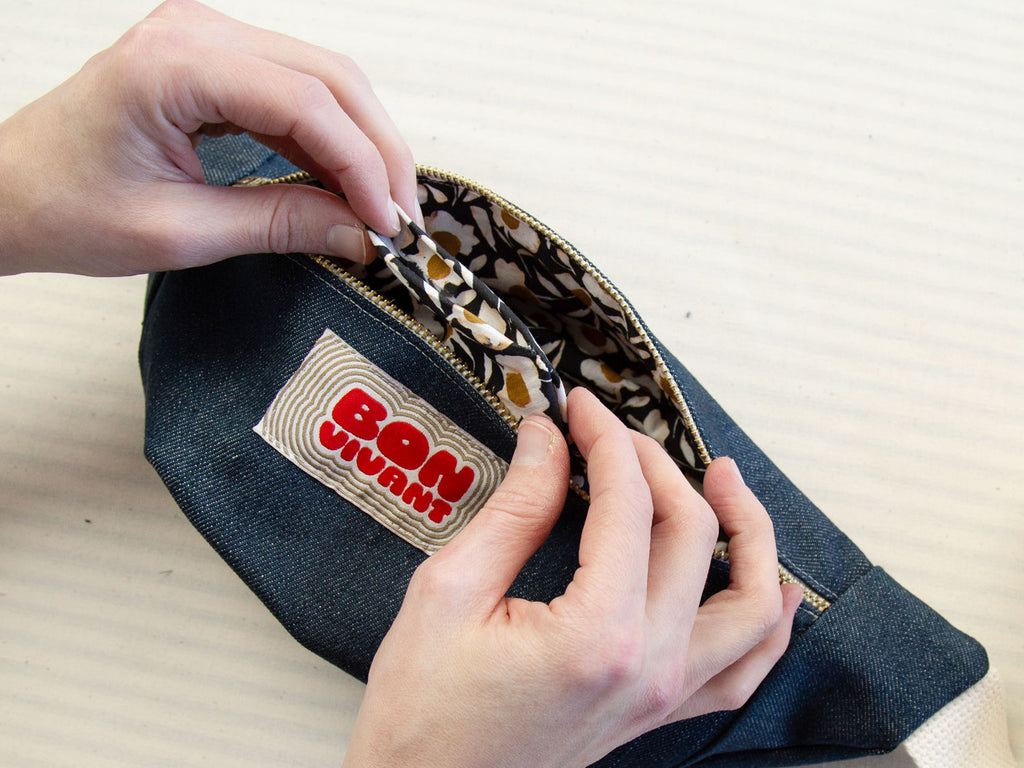
Sew the opening in the lining using an invisible stitch.
Step 8: Attach Slider Buckle and Swivel Hook
Attach swivel hook to D ring.

Pass the raw end of the webbing strap through the slider buckle, over the centre bar and back down.
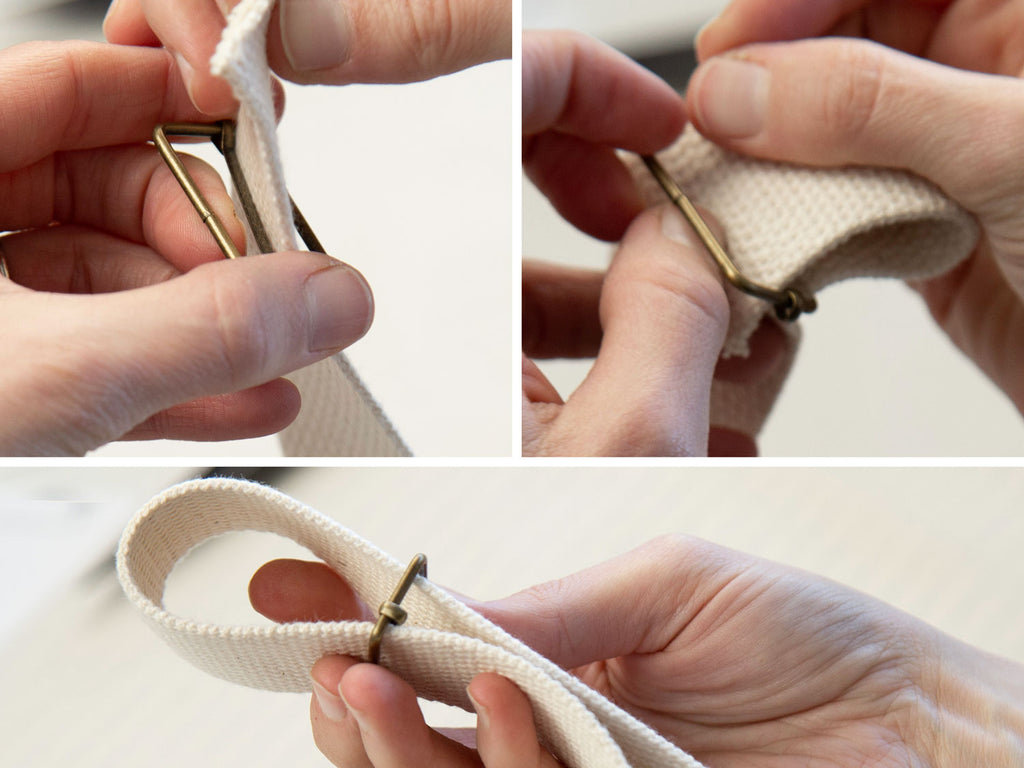
Then pass it through the swivel hook. Pass it back through the slider buckle underneath the first pass, over the centre bar, and down the opposite side.
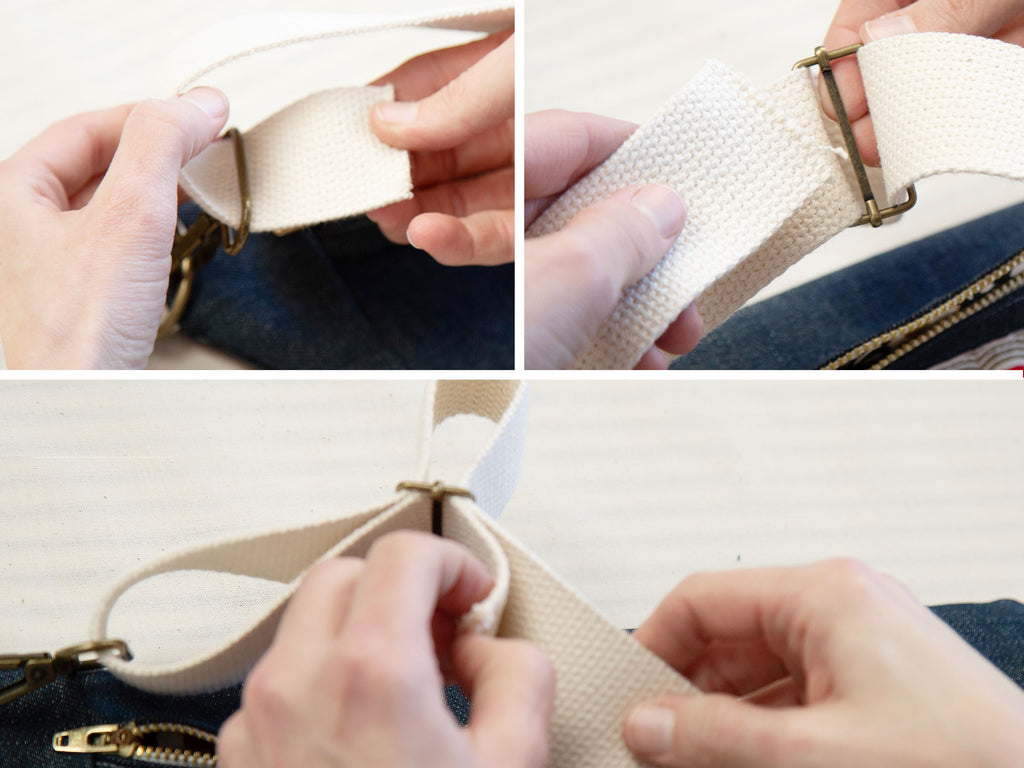
Adjust the length of the strap to your body. Depending on how you plan on wearing your belt bag, you can make it shorter and longer by sliding the webbing through the slider buckle. Cut excess webbing if necessary. Fold the raw end of the strap so that from the fold to the raw end, it measures about an inch and a quarter.
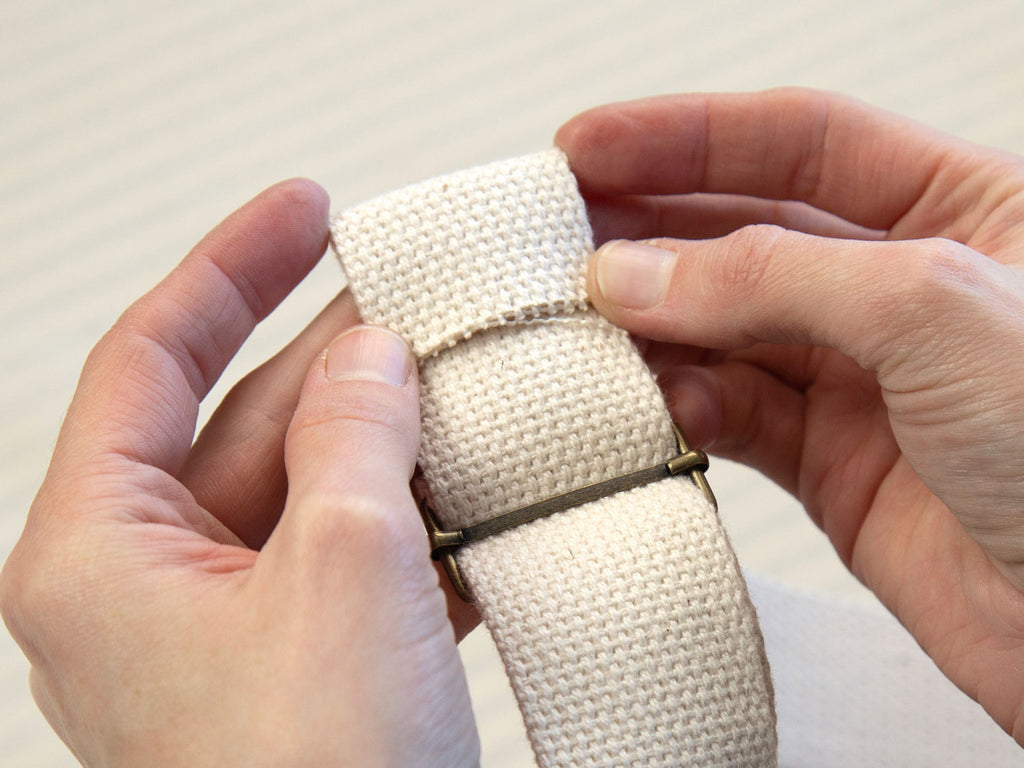
Stitch the raw end in place. Topstitch to the webbing underneath with two lines of stitching, using 1/8-inch and 1/4-inch seam allowances. Alternatively, you can sew a square with a cross or you can add rivets.
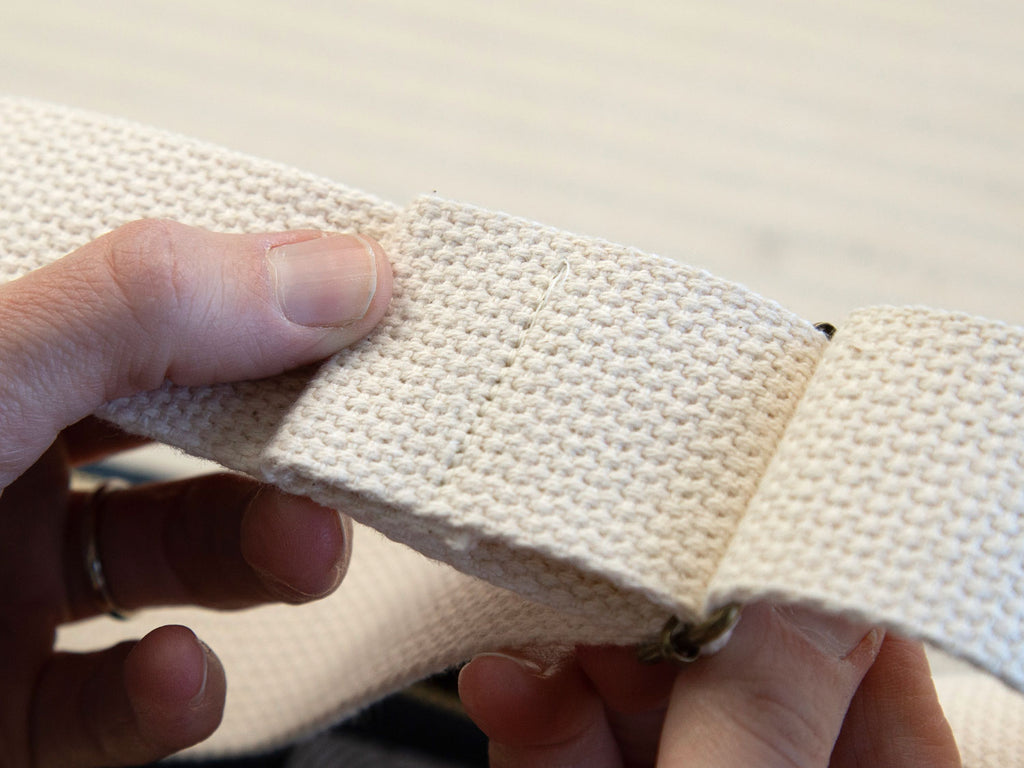
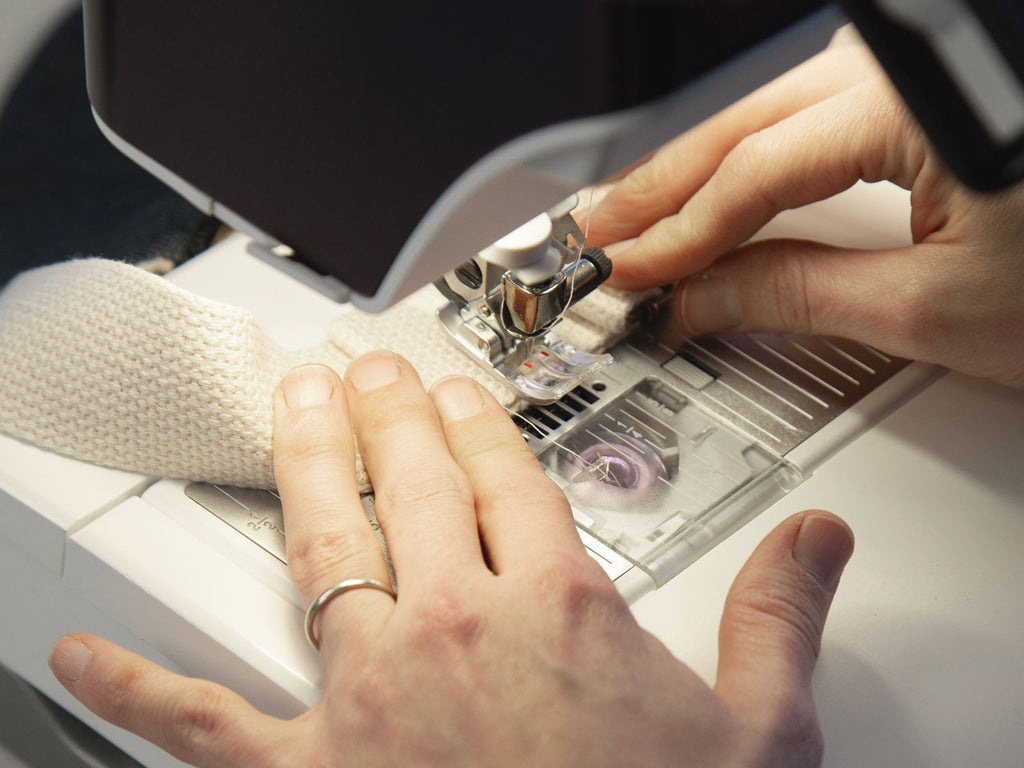
Ta-da! You did it! Give yourself a pat on the back for making your very own belt bag.
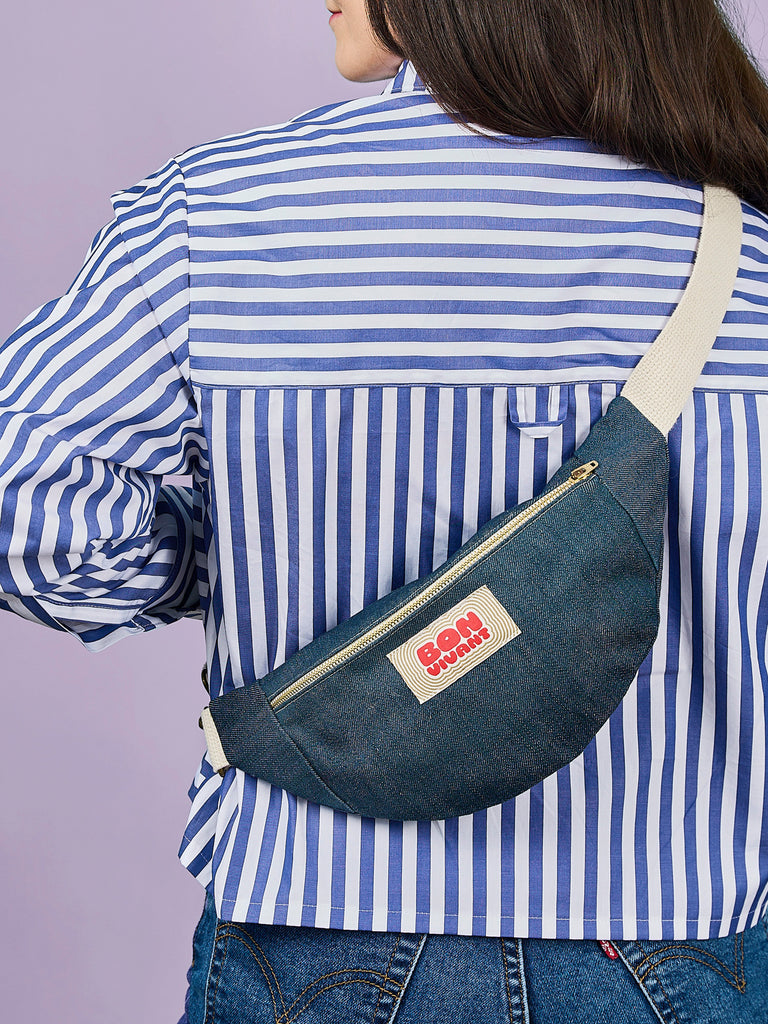
Whether you rock it as a fanny pack, sling it crossbody up front, or sport it at the back – it's all about showcasing your unique style! Don't forget to share your #CoreBeltBag moments on Instagram!

